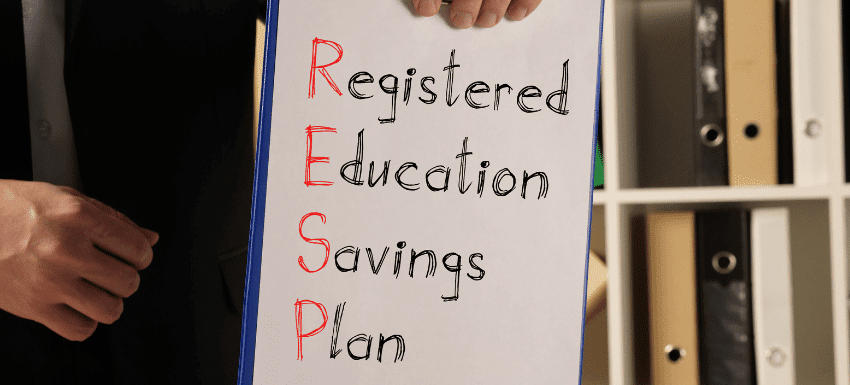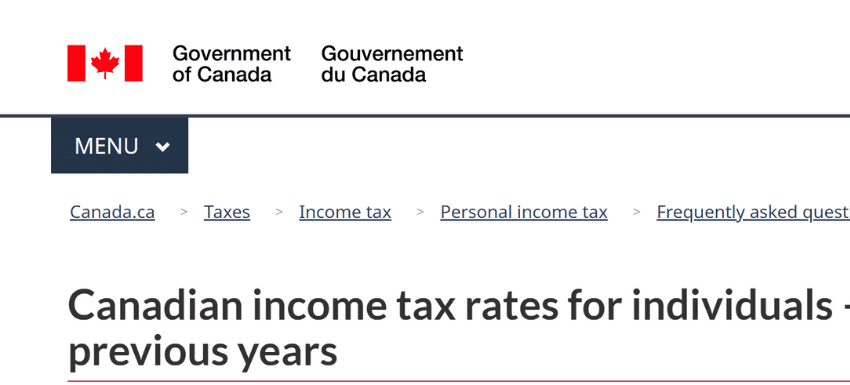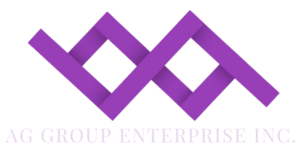
An RESP is an investment account designed to help you save for a child’s education. Here’s everything else you need to know about them.
What is a Registered Education Savings Plan?
The Registered Education Savings Plan (RESP) is pretty straightforward. These are regulated savings accounts that are used for post-secondary education for children. The main advantage of an RESP is its tax-advantaged status.
RESP definition
A RESP is a tax-advantaged account designed to help Canadian residents save for higher education. RESP funds may be invested in countless ways and are not subject to income taxes if they are used for higher-education expenses.
As long as the beneficiary and account opener are Canadian residents, it doesn’t matter who opens the account. An uncle, a grandparent, a friend of the family, or any old benevolent neighbor with access to a child’s SIN could do it. RESPs are non-transferable except to a sibling. Family RESPs, however, can only be opened by the parents or grandparents of the children and may be used for any child in the family.
Types of RESPs
There are three types of RESP in Canada. All are designed to help you save for your child’s education while giving you tax breaks.
Individual Registered Education Savings Plans: Opening an individual RESP and making contributions to it are pretty straightforward. You can ask your parents, your grandparents, a benevolent stranger with money to burn, or even yourself for financial assistance.
Family Registered Education Savings Plans: One or more beneficiaries may be included in a family plan, but they must be family members (or legally adopted). Thus, a family RESP can be opened for your child and your nephews, but not your son’s best friend from daycare. Additionally, beneficiaries must be younger than 21 at the time they are added to the plan.
Group Registered Education Savings Plans: A beneficiary in a group plan can be any child, regardless of its relationship to the plan participant. The beneficiary of this plan, however, shares the pooled investment earnings with other children of the same age. In general, group plans are more restrictive than other plans.

Benefits of Registered Education Savings Plans
There are numerous benefits to RESPs, but the main one is that your money will grow tax-free. Here are the main three:
- Save on taxes: When investing for a child’s education using an RESP, you can save thousands, perhaps even tens of thousands, in taxes. RESP in Canada are what are known as tax-advantaged accounts, which means the CRA will cut Canadians a tax break so they can save for higher education, whether that be through an apprenticeship, trade school, or university. Even though a deposit does not result in an immediate tax break for the investor, any and all gains within the account are exempt from income tax and capital gains tax as long as the money remains in the account.When investment gains are withdrawn and used for approved education expenses, such as tuition, housing, books, or even living expenses while in school, they will be subject to taxation, but since student income is typically low or nonexistent, the student may end up paying very little or nothing at all.

- Avail of the RESP: 1998 saw the implementation of the Canada Education Savings Grant, which matched 50% of RESP contributions up to $2,500 per account child per year (note to non-math majors: that means the government would contribute up to $500 per child.) Lower-income kids are eligible for even more CESG money. Children from low-income families are eligible to receive money from Canada Learning Bond, which is up to $2,000 that the government can add to a child’s RESP.
- Investing your money: The third advantage of RESPs is that funds in an account may be used to invest in any manner of instruments—mutual funds, ETFs, GICs, stocks, bonds—pretty much any kind of investment type the mind could conjure.
Tax-efficient Withdrawals
In an RESP, not only are your investments tax-free, but your withdrawals may also be tax-free. Because withdrawals are taxed in the student’s hands (who is likely in one of the lowest tax brackets), they will owe little or no tax.
Meaningful Gift-giving
RESP contributions are far more meaningful than more ‘stuff’ for your kids. Why not encourage your family and friends to contribute to your kids’ RESPs instead of gifts when they ask what they can do for your children?

Encourages Savings
RESPs come with built-in safeguards to ensure you leave that money to grow! Tax penalties and grant clawbacks are there to discourage us from withdrawing RESP funds early.
Sets a Good Example
Opening and funding an RESP sets a good example for your kids. It shows that you value their education and investing in their future. This not only encourages them to see school as being important, but also gives them security, knowing that they’ll have financial resources to help with school expenses.
Teachable Moments
By involving your children in the investment process, you can make your RESP even more valuable. Help them understand the power of compound interest by showing them how it works. Perhaps you can even inspire them to save and invest their own money!
Limitations of RESPs
There are limits to the government’s generosity. Regardless of a family’s income, no child can collect more than $7,200 from the CESG. The one major gamble with setting up a RESP in Canada is if a child decides not to study anything after high school, though there is a truly vast array of education and job training options that qualify for use of RESP funds.
In that case, the account can easily be transferred to a sibling. And if there is no sibling, the people who contributed money may transfer it to their personal RRSP tax-free for retirement savings. When a Registered Education Savings Plan is closed, all government CESG grants must be repaid, and all gains on the investments inside the registered accounts will be subject to tax. Thankfully, you can keep RESPs open for 36 years—so you’ll have plenty of time to convince your kid to go to college before you have to close the account.
Registered Education Savings Plan Contribution Limit
Under current law, you can contribute a lifetime maximum of $50,000 per beneficiary to an RESP. The amount of annual contribution room that is eligible for the Canadian Education Savings Grant (CESG) is $2,500. You are welcome to contribute more, but the 20% grant is only matched by the government up to $2,500 per year. Your contribution room is accrued each year starting in 2007 or the year the child was born, whichever is later.
The contribution room keeps accruing up to and including the year the child turns 17, so it’s possible to harass that free CESG government money even.
If you miss out on a year or two. To maximize the CESG, you will want to contribute $2,500 per year per beneficiary for 14 years, and then top it off with an extra $1,000 in the 15th year. This is because the total CESG a child can receive is $7,200. If you missed a year or started late, you can contribute more than $2,500 to retroactively claim grants. You are eligible to receive an additional $500 per year in CESG if you missed the previous year’s set of grants. In short, you can catch up for one previous year at a time by contributing more than $2,500 per year.
Registered Education Savings Plan Withdrawal Rules
There are a number of rules that come with owning a Registered Education Savings Plan in Canada, many of which are specific to the withdrawal of Registered Education Savings Plan money and can get pretty complicated. Here are the basics of what you should know before you attempt to take money out of your RESP.
- Only the person who set up the account and made contributions can make withdrawals — they’re known as the subscriber. Withdrawals of contributions made by the Subscriber are called Post-Secondary Education Payments (PSE). They may be sent to either the Subscriber or Beneficiary. Withdrawals of the government grant/bond portion (known as the Education Assistance Payments “EAP”) can only be sent to the Beneficiary.
- The subscriber must provide the financial institution who holds the RESP with a student’s proof of enrollment before being able to access funds.
- PSE payments aren’t taxable. The student will be taxed on EAP withdrawals, which consist of both investment gains as well as government grant money. The financial company who holds the RESP will issue a T4A tax form in the student’s name for EAP payments only.
- There is a $5000 limit (or $2500 if the student is enrolled part-time) on EAP contributions during the first 13 weeks of schooling, effectively eliminating the possibility one first year student will be forced to purchase beer for an entire university. There is no limit on the amount of Subscriber (PSE) contributions that can be withdrawn. Once the 13 weeks has passed, any amount of EAP contributions can be withdrawn.
RESP vs TFSA vs RRSP
Tax-advantaged accounts like TFSAs and RRSPs have their own advantages and disadvantages, depending on your circumstance. Under the right circumstances, an RRSP offers greater tax benefits, but because you must pay income taxes when you withdraw funds, it is less flexible.
A TFSA may not offer as many tax benefits as an RRSP, but since money can be withdrawn without tax consequences, it’s much more flexible. Like TFSAs, RESP earnings aren’t taxed, but an RESP’s earnings can only be used for educational purposes. RESPs lack the flexibility of TFSAs. Taxes will apply to any withdrawals made from an RESP as well as an RRSP. While RRSPs and TFSAs are both great for retirement savings, since the money you withdraw doesn’t get taxed, RESPs are excellent for young people just starting out in their education and financial journeys.
When it comes to estate planning, RESPs are also treated differently than RRSPs and TFSAs. RRSPs and TFSAs can be designated as beneficiaries. RESPs do not have beneficiary designations, but this can be handled through your will.
How to open a Registered Education Savings Plan?
You obviously have many choices of institutions where you might open an RESP, but consider trying to find one that requires no minimum investment, charges low fees, and provides unlimited phone support from knowledgeable humans for every client.) Once you have decided where to open an RESP, it won’t be hard to get started. You will need two Social Security Numbers (SINs), your own and the beneficiary’s.
Do I Need Registered Education Savings Plan?
The answer to this question isn’t found in the back of the book. RESP is a deeply personal purchase and there are many factors to consider. In addition to considering your current family’s financial needs, you should also account for future expenses like tuition. (If that sounds complicated, there are insurance calculators).
Thankfully, AG Group Enterprise Ltd, is here to help! Our mission at AG Group is to provide a wide range of Financial and Insurance help, RRSPs, RESPs, and more included!
With AG Group’s help, you can protect the future of your family and your finances. A good policy ensures a bright future!




